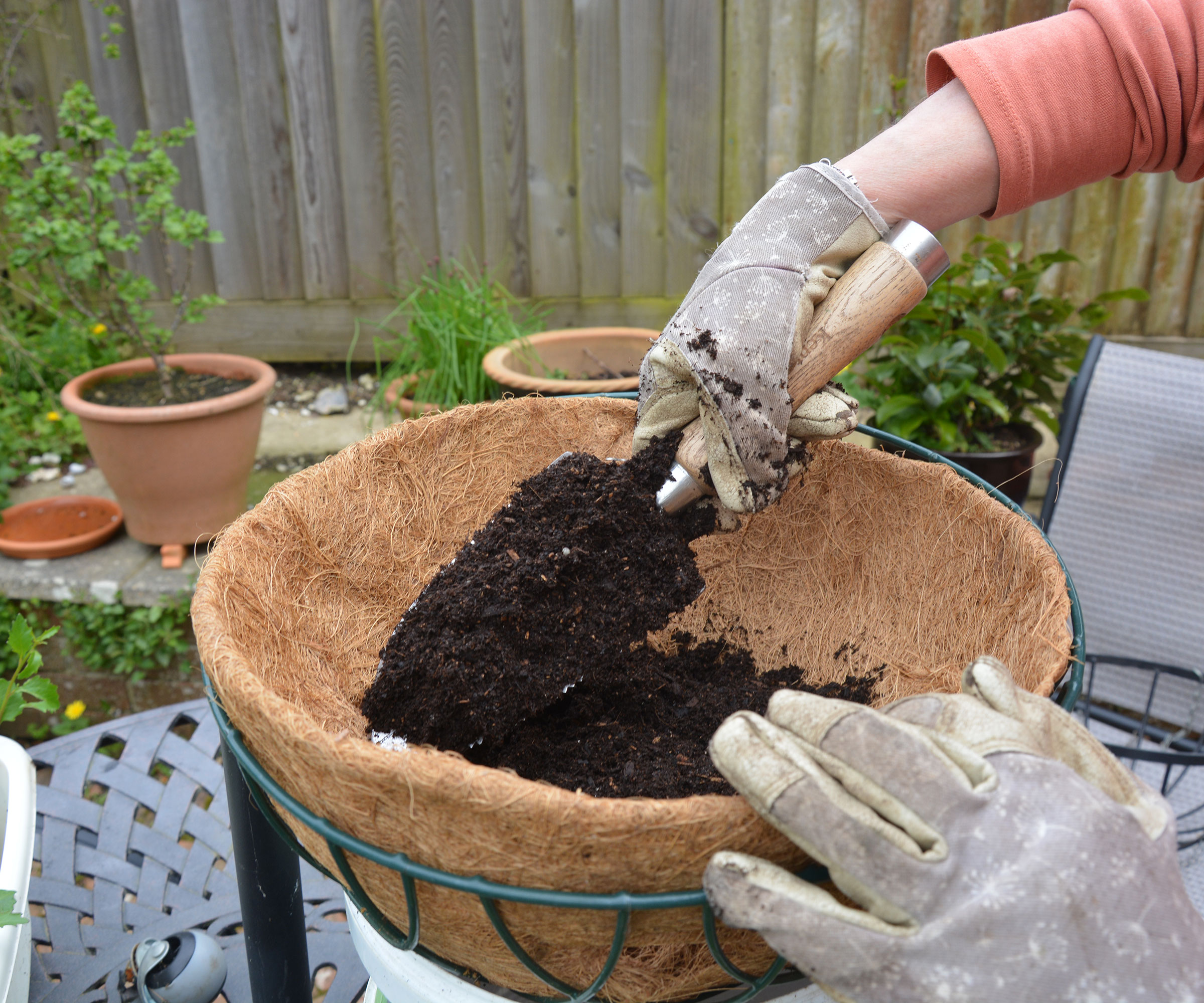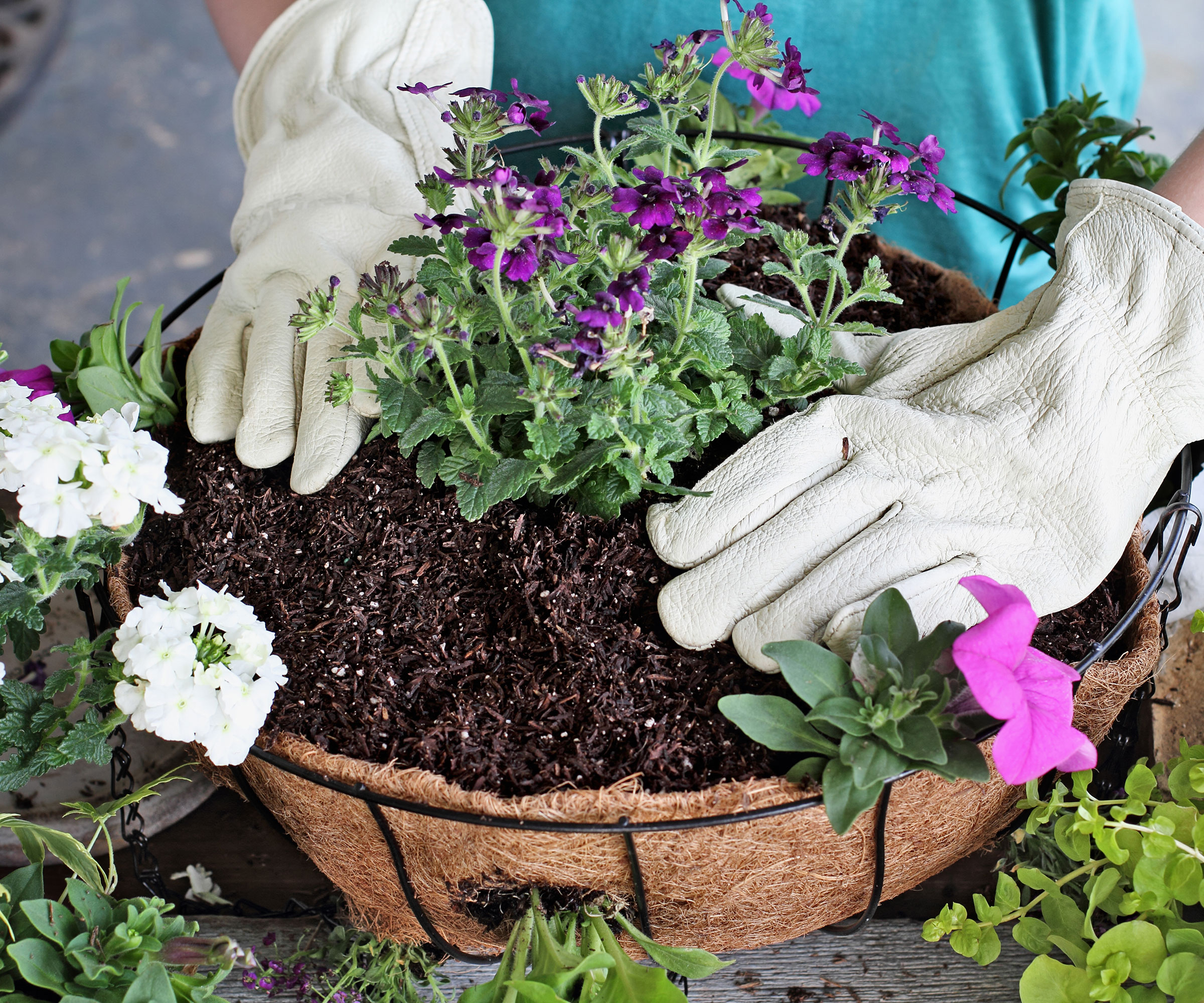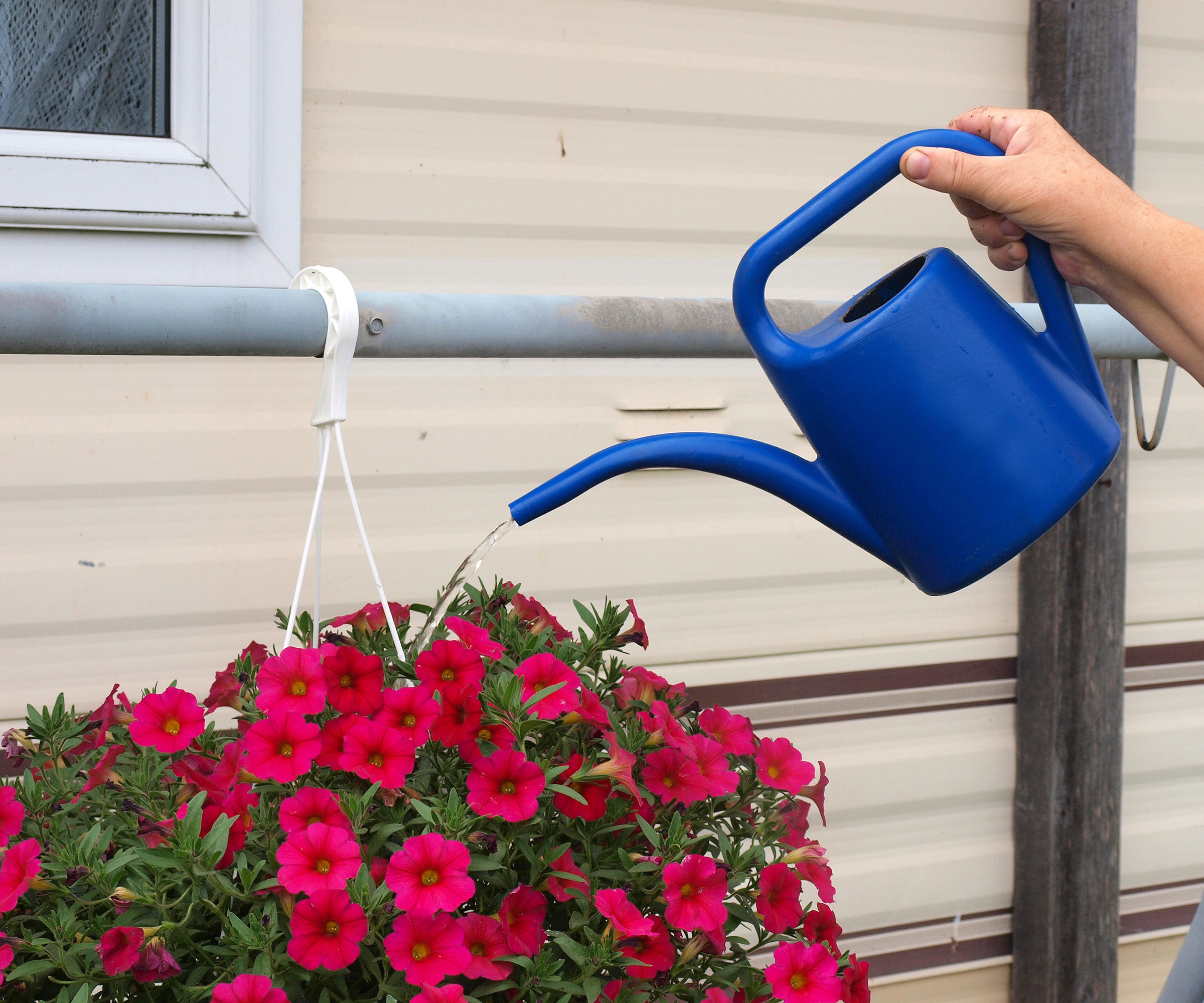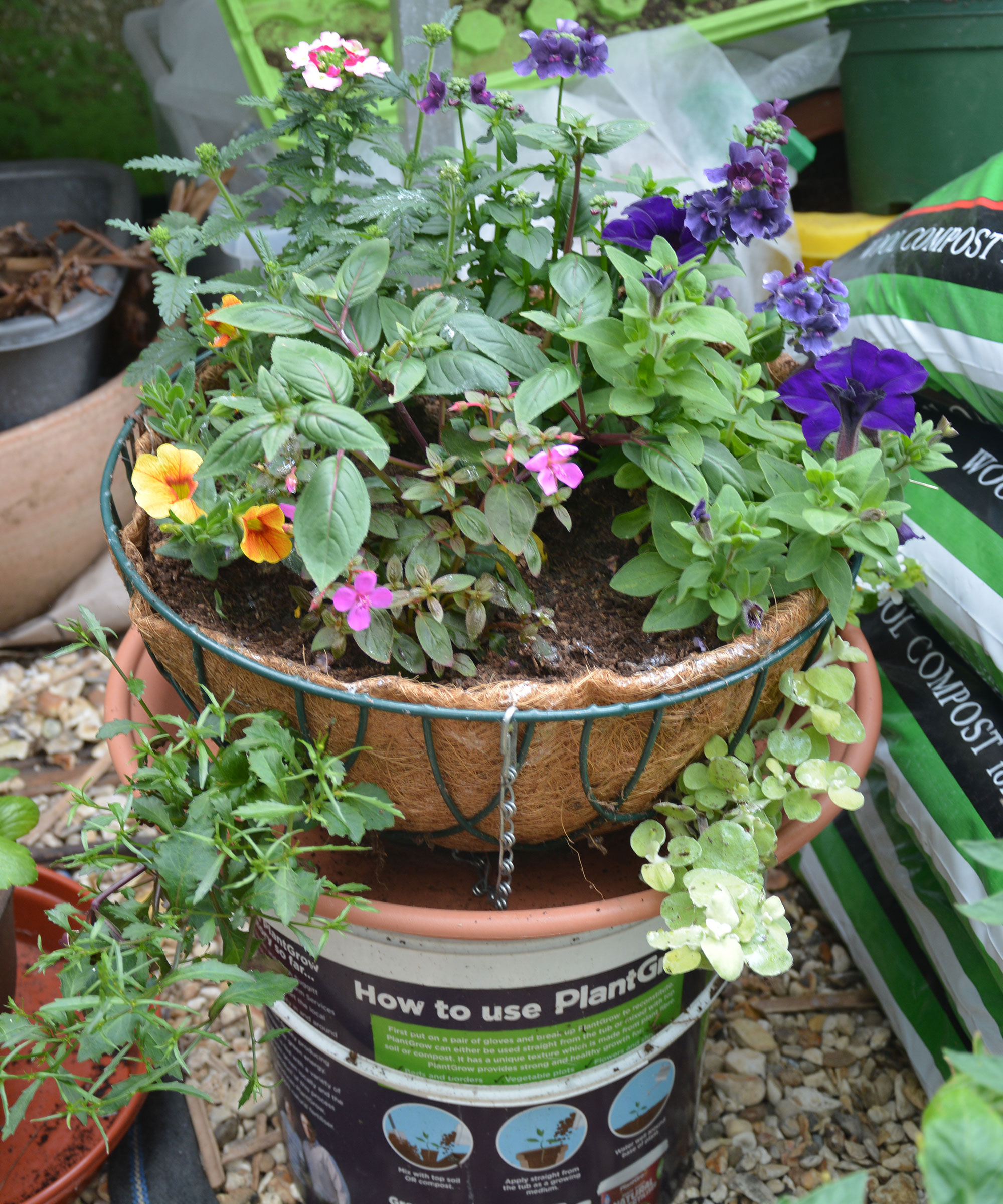
Hanging baskets are a brilliant way of adding height to your backyard and bringing vertical color and interest to small spaces, but there are some common errors that can hamper your displays.
Whether it's choosing the wrong hanging basket plants, using incorrect soil or even hanging your basket somewhere dangerous, these simple mistakes can prevent your carefully planned designs from blooming to their full potential.
Planting up baskets is becoming increasingly popular at a time when gardens are shrinking and more and more people are moving to apartments that may only have a small terrace or balcony. Ensure yours stand out from the crowd for all the right reasons by avoiding these common pitfalls.
Common hanging basket mistakes to avoid
As with coming up with colorful, interesting planter box ideas of whatever size, there are several things you should not do when planting hanging baskets. In many respects they are similar to the container planting mistakes that are so easy to make, but just as easy to avoid.
To create hanging baskets that are packed with healthy plants, color and interest right through summer and into fall, here are our top six mistakes to avoid.
1. Using the wrong potting soil
When planting a hanging basket you need to choose a potting mix that will support your plants for as long as possible. It needs to be rich in nutrients and able to retain moisture, but also drain well to avoid waterlogging, which forces oxygen out of the potting soil, effectively drowning the plants.
Also bear in mind that hanging baskets can be relatively heavy, often only supported by one or two wall brackets, so the compost needs to be light and not too full of loam, which can add weight.
Proprietary potting mixes such a Miracle Gro Potting Mix from Amazon, are formulated to meet all these requirements.
Some such as Miracle Gro Moisture Control Potting Mix, which is also available on Amazon, come with several months’ of fertilizer and contain moisture control ingredients that hold onto and release water when it is needed, helping you avoid overwatering or underwatering your plants.

2. Choosing the wrong mix of plants
The joy of hanging baskets is that they give gardeners the opportunity to create eye-catching designs using different colors, shapes and heights of plants, from tall grasses to attractive trailing plants. But be wise when choosing your plants and make sure they all have the same requirements and growing habits.
Succulents and cacti that can survive with hardly any food or water should not be included in the same basket planting scheme as annual flowers that require a consistent supply of both.
Never use container plants for shade alongside flowers for pots in full sun, and take care not to include fast-growing plants with those that are slower, as they will swamp the others and you will end up with a basket full of the same plant.
And while it can create an interesting contrast to use your hanging basket as a herb planter and mix favorite herbs in amongst your ornamental plants, avoid mint, lemon balm and oregano that will soon take over the basket.

3. Overplanting and underplanting
In the excitement of creating a colorful hanging basket to light up your yard, it’s easy to get carried away and add too many plants. Try to curb your enthusiasm and aim for one plant per inch of basket diameter – so a 12in basket should contain 12 plants, an 18in basket 18 plants, and so on.
Young plants may look small when they are first added, but they will quickly grow and fill the compost. If there are too many they will be battling for light, space, nutrients and water, and won’t grow as strongly or well.
Similarly, don’t decide to plant too few in the hope they will grow and fill the space. Plants don’t like having their roots floating around in too much cold, empty potting soil. Yes, they will eventually grow but, again, may not give you the display you hoped for.
Lots of space also gives weeds an opportunity to get a foothold in your basket, and they are likely to grow faster than your cultivated plants.

4. Getting feeding wrong
To get the best display of healthy plants that flourish and flower all through summer and into the fall, you can’t simply plant them up and let them get on with it.
Lots of plants growing in an enclosed space will quickly use up the original goodness found in the potting soil, and they will ‘fight’ for moisture too, especially during hot, dry spells.
The secret to keeping them thriving lies with fertilizing. Feeding should start around 4-6 weeks after planting when the original fertilizer in the compost is starting to run out.
Use a fertilizer with high potassium levels as this will encourage the best flowering. Something like Great Big Tomatoes on Amazon is ideal.
Not all potting soils come with added fertilizer so you may wish to add your own. I would use a granular fertilizer such as Burpee Natural Purpose (available on Amazon). It releases its goodness gradually, giving several weeks of feed.

5. Insufficient watering
All plants in container gardens require more water than those growing in the ground, so don't make one of the most common hanging basket mistakes and forget to water yours regularly. What's more, unlike patio containers that have regular access to rain, hanging baskets may be sheltered by the house eaves or used as part of your summer porch decor so they miss out on seasonal showers too.
Knowing when to water plants and how to do it correctly will help your plants look their best. During prolonged dry spells you may need to water plants in containers daily, but stick your finger in the compost first to check. If it feels dry, grab your watering can but if you can still detect moisture leave it for another day.
As baskets are high up you may need a watering can with a long spout, like this Qilebi watering can on Amazon, or a garden hose with a trigger spray attachment.
You may even need to use a step ladder with a platform for holding your watering can to access a high basket. If you do, makes sure someone is around to hold it steady while you are standing on it.
If you are worried about keeping your plants watered while away on vacation, an irrigation kit attached to a timer like this Greenhouse Micro Drip Kit on Amazon may be the way forward. Some, such as this Rainpoint wifi connected kit available from Amazon can even be controlled from your smart phone

6. Hanging your basket somewhere dangerous
While the idea of hanging baskets is to add another dimension to our backyards by introducing color higher up a wall or fence, this also runs the risk of putting plants in greater peril.
While they will thrive in a sheltered, sunny spot they will be at the mercy of the elements and get a real battering if you hang them on a windy corner or along a fence you are using as a windbreak.
Where possible, place your baskets where they have access to plenty of sun, light winds and rain (so you don’t have to water as much!).
By doing so you will help the plants to thrive and grow and you are less likely to have to go to the trouble of replacing any that have fallen foul of the weather.
Wherever you hang your baskets, if violent storms are forecast take them down for the duration and stand them on a pot in your greenhouse or a cool room until the weather improves again.
Also make sure your baskets are at a safe height and safely secured to avoid injuring guests when they arrive for a visit!

Don't forget that once the summer is over and your plants are past their best, you can use them to make homemade compost and reuse the old potting mix as soil conditioner on your backyard flower beds.
If you used perennials in your planting mix, salvage them and pot them up so they can be used again in the backyard next summer.







